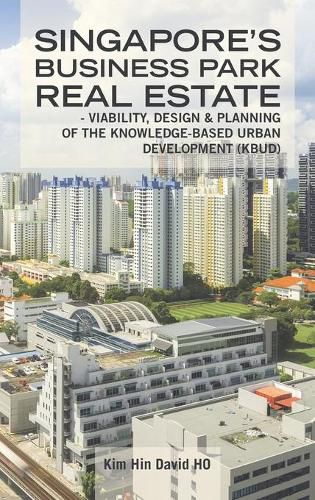Readings Newsletter
Become a Readings Member to make your shopping experience even easier.
Sign in or sign up for free!
You’re not far away from qualifying for FREE standard shipping within Australia
You’ve qualified for FREE standard shipping within Australia
The cart is loading…






This title is printed to order. This book may have been self-published. If so, we cannot guarantee the quality of the content. In the main most books will have gone through the editing process however some may not. We therefore suggest that you be aware of this before ordering this book. If in doubt check either the author or publisher’s details as we are unable to accept any returns unless they are faulty. Please contact us if you have any questions.
Chapter 1 explores the extent to which the fundamental structure and behaviour of the large-scale high-tech strategic industrial real estate development projects, can be shaped in terms of institutional and macroeconomic conditions. Capital budgeting techniques and copula risk functions, affirm the relative influence of uncertain macroeconomic and financial variables, on the profitability of Singapore’s Biopolis at the One North development. Chapter 2 looks at the dynamics of the large-scale high-tech strategic industrial real estate market. The Chapter aims to understand the fundamental structure and behaviour of the industrial real estate in Singapore, and to broadly indicate the relative impacts of macroeconomic conditions on such industrial real estate market dynamics. In Chapter 3 and for the case of Singapore, the Chapter adopts the unrestricted vector autoregressive (VAR) approach, to understand how the space and asset markets in industrial real estate, are shaped via endogenous and exogenous factors. Chapter 4 construes the knowledge-based urban development (KBUD) strategy, to be a significant form of urban renewal of post-industrial cluster-based industrial cities. Urban planners are compelled to explore mixed-use zoning, the knowledge-based urban development-land use design model (KBUD-LUDM), its knowledge interaction design criteria (KIDC) and the land-use cost criteria (LUCC). Chapter 5 concludes this book.
$9.00 standard shipping within Australia
FREE standard shipping within Australia for orders over $100.00
Express & International shipping calculated at checkout
This title is printed to order. This book may have been self-published. If so, we cannot guarantee the quality of the content. In the main most books will have gone through the editing process however some may not. We therefore suggest that you be aware of this before ordering this book. If in doubt check either the author or publisher’s details as we are unable to accept any returns unless they are faulty. Please contact us if you have any questions.
Chapter 1 explores the extent to which the fundamental structure and behaviour of the large-scale high-tech strategic industrial real estate development projects, can be shaped in terms of institutional and macroeconomic conditions. Capital budgeting techniques and copula risk functions, affirm the relative influence of uncertain macroeconomic and financial variables, on the profitability of Singapore’s Biopolis at the One North development. Chapter 2 looks at the dynamics of the large-scale high-tech strategic industrial real estate market. The Chapter aims to understand the fundamental structure and behaviour of the industrial real estate in Singapore, and to broadly indicate the relative impacts of macroeconomic conditions on such industrial real estate market dynamics. In Chapter 3 and for the case of Singapore, the Chapter adopts the unrestricted vector autoregressive (VAR) approach, to understand how the space and asset markets in industrial real estate, are shaped via endogenous and exogenous factors. Chapter 4 construes the knowledge-based urban development (KBUD) strategy, to be a significant form of urban renewal of post-industrial cluster-based industrial cities. Urban planners are compelled to explore mixed-use zoning, the knowledge-based urban development-land use design model (KBUD-LUDM), its knowledge interaction design criteria (KIDC) and the land-use cost criteria (LUCC). Chapter 5 concludes this book.